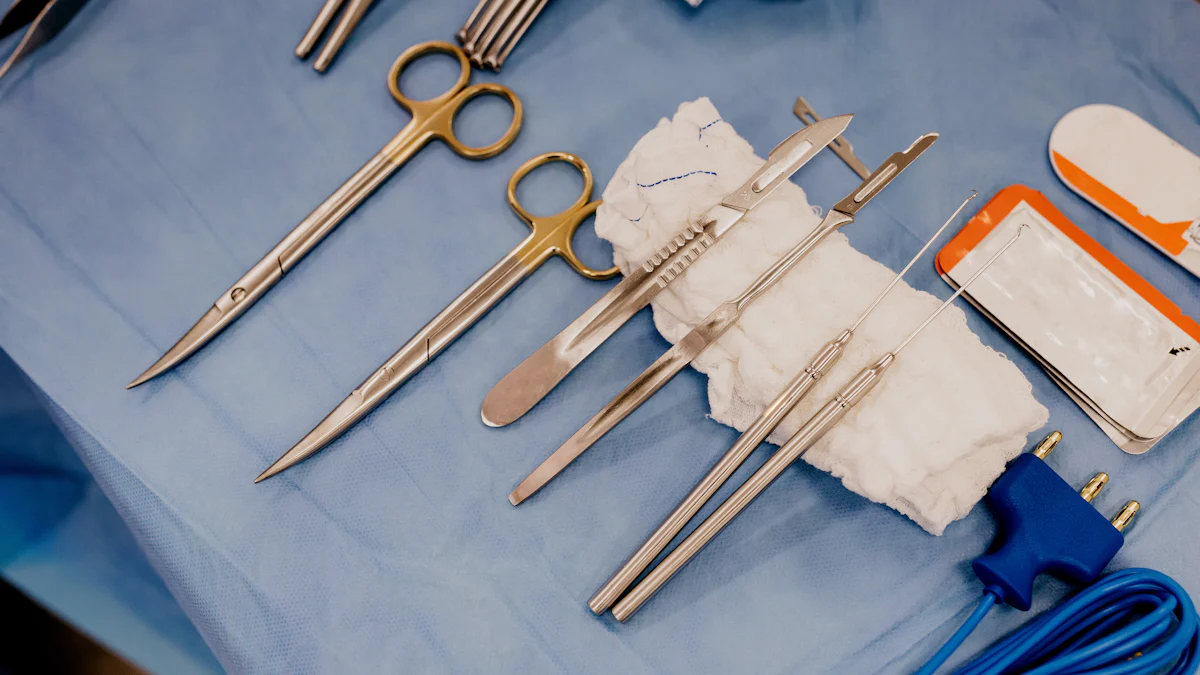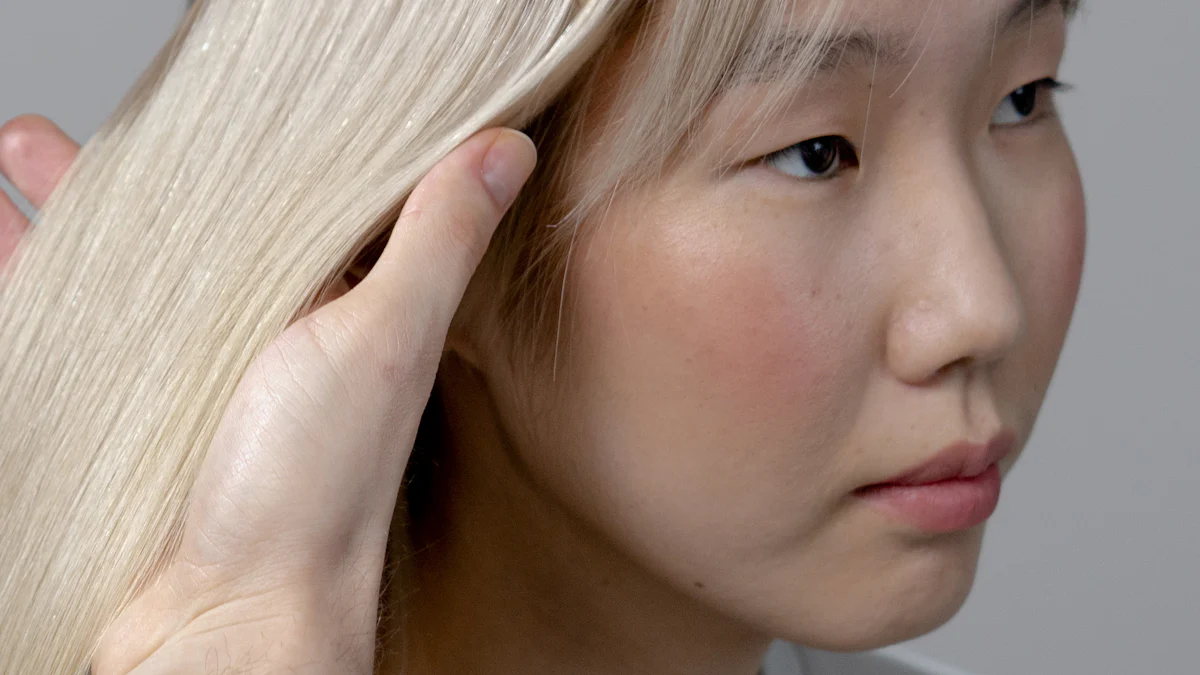How to Remove Tape In Hair extensions

Tape in hair extensions have become a favorite choice for many, capturing about 30% of the market share. These extensions offer a seamless look and are easy to apply. However, removing them requires care. Proper removal is crucial to avoid damaging your natural hair. You might face risks like hair breakage if not done correctly, but the benefits of maintaining healthy hair make it worthwhile. Understanding the right techniques ensures you enjoy the beauty of extensions without compromising your hair's health.
Preparation for Removal

Getting ready to remove your tape in hair extensions? Let's make sure you have everything you need for a smooth process.
Gathering Necessary Tools
First, gather the right tools. This step is crucial to ensure you remove the extensions without damaging your natural hair.
Types of Removers
You'll need a good remover. Consider using Tape-In Hair Extension Remover. It's designed specifically for dissolving the glue gently. Another option is the Rapid Release Remover, which simplifies the process without harsh chemicals. If you prefer a spray, try the Tape Remover Spray. These products help break down the adhesive effectively.
Additional Supplies Needed
Besides removers, you'll need a few more items:
-
A fine-tooth comb to help separate the extensions from your hair.
-
Clips to section your hair.
-
A towel to protect your clothing.
-
A mirror to see what you're doing.
Preparing Your Hair
Now that you have your tools, it's time to prep your hair. Proper preparation makes the removal process easier and safer.
Detangling and Sectioning
Start by detangling your hair. Use a wide-tooth comb to gently remove any knots. Then, section your hair using clips. This helps you focus on one area at a time, making the process more manageable.
Protecting Your Scalp and Hair
Protect your scalp and hair by applying a bit of coconut or olive oil. This creates a barrier and helps loosen the adhesive. It also nourishes your hair, keeping it healthy during the removal.
By following these steps, you'll be well-prepared to remove your tape in hair extensions safely and efficiently. Remember, taking the time to prepare ensures a smoother experience and keeps your natural hair in great condition.
Methods of Removal
Removing tape-in hair extensions can be done in several ways. Let's explore the different methods to find what works best for you.
Oil-Based Removers
Oil-based removers are a popular choice for gently loosening the adhesive on tape-in extensions.
Application Process
To use an oil-based remover, start by applying your chosen oil—such as coconut, olive, or argan oil—directly onto the tape. Let the oil sit for a few minutes to allow it to seep between the tape layers. This helps to loosen the adhesive. You might need to add more oil as you gently peel the tape away from your hair. Massage the oil into the tape until it starts to lift off easily. A small amount of hair shedding is normal, so don't worry if you notice some strands coming loose.
Pros and Cons
Pros:
-
Gentle on hair and scalp.
-
Natural oils nourish your hair.
-
Easily accessible and affordable.
Cons:
-
Takes longer than other methods.
-
May leave an oily residue that requires thorough washing.
Alcohol-Based Removers
Alcohol-based removers offer a quicker alternative for those looking to remove extensions efficiently.
Application Process
Spray the alcohol-based remover directly onto the tape tabs. Allow the solution to penetrate the adhesive for a few minutes. As the corners of the tape begin to lift, apply more spray to aid in the removal process. Some people find that a mixture of rubbing alcohol, water, and a few drops of essential oil works well. The essential oil adds a pleasant scent, making the process more enjoyable.
Pros and Cons
Pros:
-
Fast-acting and efficient.
-
Leaves less residue compared to oil-based removers.
Cons:
-
Can be drying to hair and scalp.
-
Requires careful handling to avoid irritation.
Professional Assistance
Sometimes, seeking professional help is the best option for removing tape-in extensions.
When to Seek Help
Consider professional assistance if you're unsure about the removal process or if your extensions are particularly stubborn. Professionals have the experience and tools to remove extensions safely and effectively.
Benefits of Professional Removal
-
Expertise: Professionals know how to handle different types of extensions and adhesives.
-
Safety: Reduces the risk of damaging your natural hair.
-
Convenience: Saves you time and effort.
Choosing the right method for removing your tape-in extensions depends on your preferences and hair needs. Whether you opt for oil-based, alcohol-based, or professional removal, each method has its own benefits. By understanding these options, you can ensure a smooth and safe removal process.
Aftercare and Maintenance

Taking care of your hair after removing tape-in extensions is crucial. This ensures your natural hair remains healthy and ready for future styling.
Post-Removal Hair Care
Once you've successfully removed your extensions, it's time to focus on your hair's health.
Cleaning Residue
Start by thoroughly cleansing your hair. You might need to shampoo up to three times to remove any leftover oils or adhesive residue. This step is essential to ensure your scalp and hair are completely clean. As Hill suggests, "Shampooing and conditioning your hair after removing extensions helps replace moisture." So, don't skip this part!
Conditioning and Repair
After cleansing, it's time to condition and repair. Extensions can sometimes prevent your hair from retaining the nourishment it needs. Focus on hydrating and strengthening your strands. Consider using protein treatments for up to three weeks. These treatments help bind strengthening properties to your hair fibers. Applying natural oils like castor or shea oil can also be beneficial. They not only break down any remaining adhesive but also protect your hair’s natural fibers. This step acts as an excellent pre-moisturizing treatment.
Preparing for Reapplication
If you're planning to reapply extensions, preparation is key.
Assessing Hair Health
Before you think about new extensions, assess your hair's health. Check for any signs of damage or weakness. Make sure your hair is strong enough to handle another round of extensions. If you notice any issues, give your hair some time to recover. Use nourishing treatments to restore its health.
Choosing New Extensions
Once your hair is ready, it's time to choose new extensions. Consider what type of extensions will best suit your needs and lifestyle. Look for high-quality options that won't compromise your hair's health. Remember, the right choice can make all the difference in maintaining beautiful, healthy hair.
By following these aftercare and maintenance steps, you'll ensure your hair stays in great condition. Whether you're planning to reapply extensions or enjoy your natural look, taking care of your hair is always a worthwhile investment.
Removing tape-in hair extensions requires careful attention to protect your natural hair. Here's a quick recap:
-
Gather the right tools: Use appropriate removers and supplies.
-
Prepare your hair: Detangle and section for easier removal.
-
Choose the right method: Consider oil-based or alcohol-based removers.
For safe removal, remember these tips:
-
Be patient and gentle to avoid damage.
-
If unsure, seek professional help. They ensure proper removal without harm.
By following these steps, you can enjoy beautiful hair without compromising its health.










